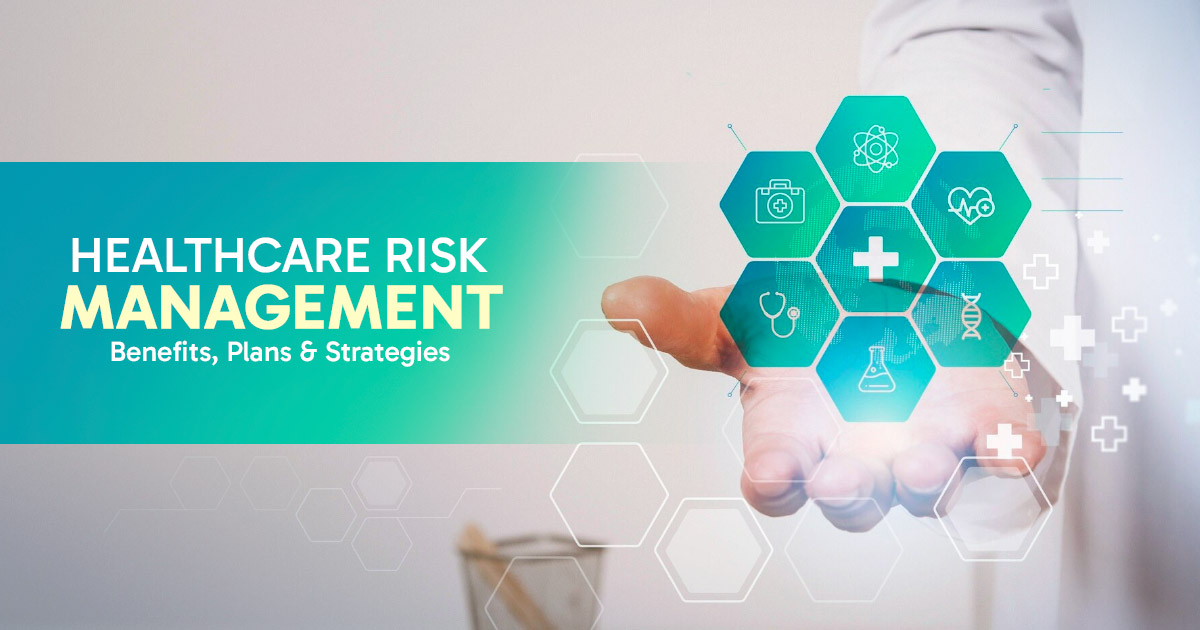Healthcare Risk Management: Benefits, Plans & Strategies

Taking risks and being ready for them are key traits of any successful organization. Smart risks can lead to progress, while planning ahead helps avoid problems and stay strong during tough times. For example, a report shows that 92% of the world’s 500 largest companies use financial tools like derivatives to manage risks, believing it adds value and benefits their shareholders. This shows how important risk management is—not just for avoiding problems but for creating opportunities and strengthening organizations.
This idea is even more critical in healthcare, where risks aren’t just about money or reputation—people’s lives are involved.
What is Risk Management in Healthcare?
Risk management in healthcare is about finding, understanding, and addressing potential problems to keep patients, staff, and the organization safe. It helps prevent unexpected events that could harm the quality of care, patient trust, or the organization’s finances.
Unlike other industries, risk management in healthcare often involves life-or-death situations as well as legal and operational challenges. Its goal is to reduce harm, avoid legal issues, and improve efficiency, all while following rules and regulations. From patient safety to running hospitals smoothly, risk management is essential for trust and high-quality care.
3 Main Areas of Risk Management in Healthcare
1. Clinical/Patient Safety Risk Management
This focuses on risks that affect patient care and safety, like medication mistakes, surgical errors, or infections obtained in the hospital. Preventing these issues includes using safety protocols, training staff, and tracking incidents to make sure care stays safe.
2. Operational Risk Management
This deals with risks in the organization’s daily operations, such as technology failures, data breaches, or errors in procedures. It works on creating backup plans and improving processes to keep things running smoothly.
3. Financial and Legal Risk Management
Financial risks include rising costs or lawsuits. Legal risks occur when healthcare facilities don’t follow important rules, like data privacy laws or safety standards. Managing these risks involves ensuring compliance, regular checks, and careful financial planning.
Why is the Role of Risk Management Important in Healthcare?
Risk management plays a key role in healthcare because of the high stakes and special challenges in the field. It helps healthcare facilities run safely, follow rules, and deliver quality care. Here are the main reasons why it is so important:
1. Keeps Patients Safe
The top goal of risk management is to protect patients from harm. It works to find and fix problems like medical errors, poor communication, or procedural mistakes, improving safety and care.
2. Ensures Rule Compliance
Healthcare organizations have to follow tough rules, like HIPAA for data privacy and OSHA for workplace safety. Risk management helps them stick to these rules, avoiding fines and legal trouble.
3. Protects Finances
Risk management lowers expenses from fraud, lawsuits, and inefficiencies by identifying risks early. This financial stability means more money can go toward better patient care.
4. Maintains Trust and Reputation
A single mistake can damage a healthcare facility’s reputation. Risk management prevents problems that could lead to public distrust or bad publicity, keeping trust intact.
5. Supports Staff Safety and Productivity
Risk management looks out for staff by addressing unsafe work conditions or heavy workloads. Happier, safer staff provide better care and stay with the organization longer.
6. Improves Operations
It finds inefficiencies in how the facility works, like problems with technology or delays. Fixing these issues makes patient care faster and smoother.
7. Meets Accreditation and Quality Standards
Many healthcare facilities need special approvals to operate. Risk management helps them meet these standards consistently, ensuring both patient care and success.
8. Prepares for Emergencies
Healthcare organizations face big crises, like pandemics or cyberattacks. Strong risk management plans help them handle emergencies better and recover quickly.
Effective Plans and Strategies for Risk Management in Healthcare
Step 1: Identify Risks Regularly
- Check quarterly for possible risks in patient care, data safety, and staff well-being.
- Use easy tools like checklists to find problem areas.
- Ask for input from different staff to get a full picture.
- Write down risks, rank them by importance, and focus on the big ones first.
Step 2: Make a Risk Management Plan
- Create a clear guide for stopping, managing, and fixing risks.
- Include specific steps for staff to follow during problems or emergencies.
- Make sure everyone knows their role in keeping things safe.
- Update the plan when needed and share it with all employees.
Step 3: Train Staff Often
- Schedule regular training sessions about safety rules, patient care, and emergency steps.
- Practice with drills for situations like evacuations or medical emergencies.
- Refresh training each year and provide extra support for high-risk areas.
- Teach new staff what they need to know right from the start.
Step 4: Improve Team Communication
- Hold regular meetings to talk about safety concerns and updates.
- Set up easy systems for staff to report issues, like an online form.
- Create a blame-free culture so staff feel safe talking about risks.
- Have clear steps for sharing urgent information during emergencies.
Step 5: Keep Patients Safe
- Use tools like safety checklists to track and avoid mistakes.
- Set up a team to check if safety rules are being followed.
- Look for patterns in safety reports and fix ongoing problems.
- Listen to patient feedback to improve care.
Step 6: Protect Technology and Data
- Keep patient data safe with secure systems and regular backups.
- Limit data access to only those who need it.
- Train staff to spot computer security risks like phishing emails.
- Test security systems yearly to fix any weak spots.
Step 7: Follow the Rules
- Pick someone to keep track of healthcare rules and regulations.
- Check twice a year to make sure all practices follow applicable laws.
- Share clear instructions about important rules with staff.
- Always be ready for inspections or audits by preparing in advance.
Step 8: Plan for Emergencies
- Create detailed plans for crises such as natural disasters, power failures, or health outbreaks.
- Map out evacuation routes and decide who does what in emergencies.
- Practice drills a few times each year to stay prepared.
- Work with local emergency teams, like fire departments, for extra help.
Step 9: Focus on Safety First
- Make safety goals part of staff reviews and daily work habits.
- Reward team members who come up with good safety ideas.
- Hold monthly talks about safety concerns.
- Put up posters or reminders about meeting safety goals.
Step 10: Build a Risk Management Team
- Put together a team with experts in patient care, compliance, and safety.
- Meet regularly to talk about risks and track progress.
- Provide the team with enough resources, like training or software, to do their job well.
- Bring in outside help when needed for expert advice.
Step 11: Review Policies and Update Them
- Check policies every six months to keep up with changes in healthcare.
- Learn from past mistakes and update plans to prevent repeats.
- Use feedback from staff and patients to improve rules.
- Add new policies for risks as new concerns arise.
Step 12: Include Patients in the Process
- Teach patients what they can do to stay safe, like knowing their medication.
- Give them clear instructions in guides or at check-ins.
- Listen to patients’ feedback and use it to improve care.
- Make emergency signs visible and easy to understand.
The Main Goal of Strong Risk Management in Healthcare
A good risk management system is essential for keeping a healthcare facility safe and running smoothly. It protects both patients and staff while improving how things work, meeting rules, and keeping the organization financially stable. Healthcare facilities can save lives, foster trust, and provide a safe and healthy environment for both patients and employees by putting a high priority on risk management.

